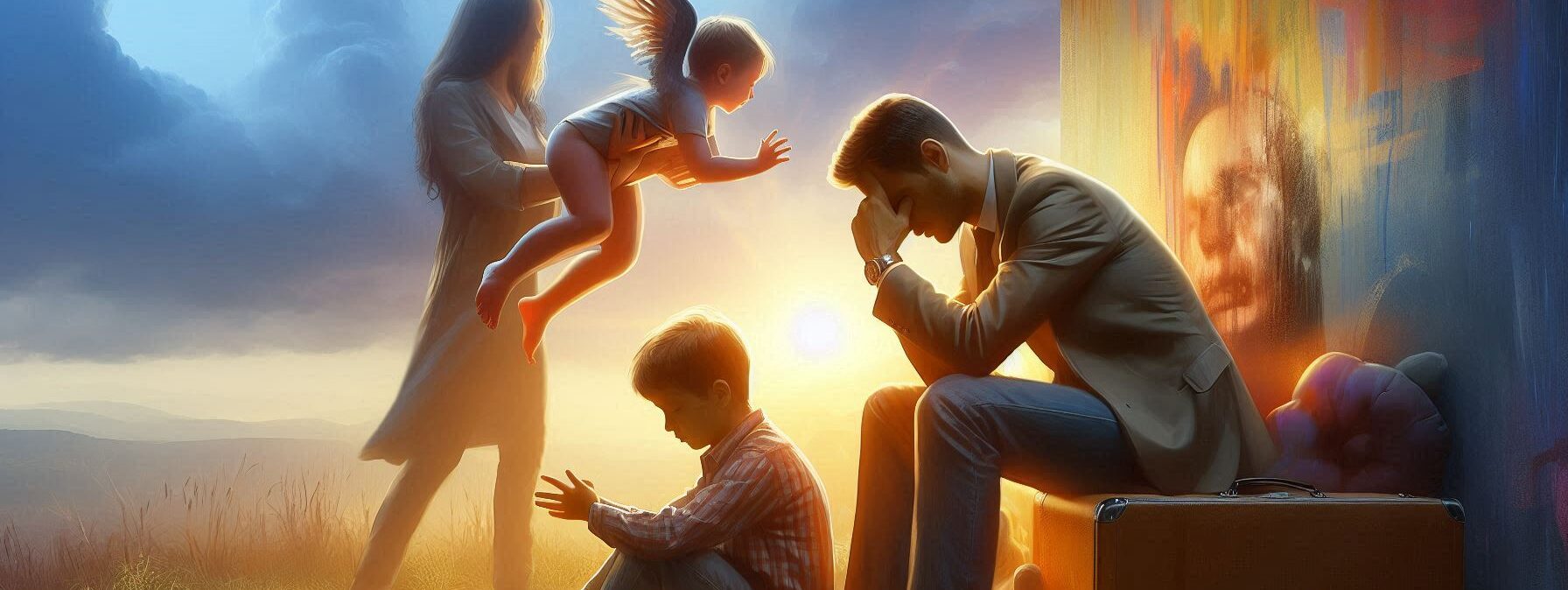Please Note: This post may contain affiliate links. If you click one of them, we may receive a commission at no extra cost to you. As an Amazon Associate, I earn from qualifying purchases.
Let’s face it: childhood can be a wild ride. One minute you’re playing tag, and the next, you’re hiding under the bed from your imaginary monsters or, worse yet, your actual family drama.
It’s like life decided to throw in some plot twists worthy of a daytime soap opera. But what happens when those traumatic experiences linger long after the bedtime stories have ended?
Spoiler alert: they can come back to haunt us as adults, often manifesting as depression.
Top Takeaways and Key Concepts
- Recognize childhood trauma as distressing experiences that can impact adult mental health.
- Understand that trauma can over-activate the brain, increasing stress hormones and depression risk.
- Identify coping mechanisms, distinguishing between healthy outlets and harmful distractions or avoidance.
- Seek professional therapy to process trauma and develop healthier coping strategies.
- Engage with support groups or communities to share experiences and foster emotional healing.
Summary of This Article
This article explores how childhood trauma can affect adult mental health, often contributing to depression and anxiety through long-term stress responses in the brain. It explains the importance of recognizing past trauma and evaluating coping mechanisms, highlighting the risks of unhealthy avoidance behaviors. Professional therapy is emphasized as a key tool for learning healthier ways to cope, while support groups provide connection and empathy. Ultimately, healing is a non-linear process, but acknowledging trauma, seeking help, and building supportive communities are essential steps toward recovery and emotional resilience.
What Is Childhood Trauma?

By the way, let’s define what we mean by “childhood trauma.” It sounds intense, right? Imagine being stuck on an elevator with a mime for an hour—awkward and unsettling!
In psychological terms, childhood trauma refers to distressing events that occur during formative years.
This could include anything from abuse (physical or emotional), neglect, witnessing violence, or even losing a parent.
Interestingly enough, these experiences can shape how we view the world as adults. Think of it like this: if your childhood was a movie genre, would it be a heartwarming family flick or an edge-of-your-seat thriller?
For many people who experienced trauma early in life, it might feel more like a horror film where every creak of the floorboards sends them into panic mode.
Take Sarah’s story. She grew up in a household where yelling was as common as cereal for breakfast.
As an adult, she found herself overly anxious in relationships and constantly bracing for conflict—even when her partner just wanted to discuss dinner plans! It’s amazing how those early experiences can set off alarm bells years later.
The Brain’s Response to Trauma
Now let’s dive into how our brains respond to trauma—it’s not exactly like getting a new app update. When children experience traumatic events, their brains go into overdrive trying to protect them.
This is where our good friend cortisol comes in—a hormone that helps manage stress but can also wreak havoc when levels stay elevated too long (like that one friend who overstays their welcome).
To be fair, our brains are wired for survival; they want us safe! However, if someone grows up with constant stressors or fear-inducing situations, their brain may become accustomed to living on high alert—like an over-caffeinated squirrel preparing for winter.
As adults, this heightened state of anxiety can lead to depression because our bodies don’t know how to relax anymore!
Think about it: if you’ve spent years running away from imaginary lions in your head (or real ones at home), how do you find peace? You might end up feeling exhausted—physically and emotionally—and that’s where depression can sneak in through the back door.
Coping Mechanisms We Adopt
Speaking of exhaustion—let’s chat about coping mechanisms! These are the strategies we develop over time to handle stress and trauma.
Some people turn to healthy outlets like exercise or art (which is awesome!), while others might find themselves knee-deep in ice cream tubs while binge-watching reality TV (guilty!).
For instance, there’s Mike who discovered he had developed quite an impressive collection of Netflix shows he could quote verbatim—not because he loved them but because they served as distractions from his feelings.
He figured if he could laugh at someone else’s drama on screen instead of dealing with his own past traumas… well hey—that worked until it didn’t!
Unfortunately, unhealthy coping mechanisms often lead down dark paths filled with self-medication or isolation—which only exacerbates feelings of depression later on.
So remember: while avoiding problems may seem easier than facing them head-on at first glance (like dodging chores), eventually those unaddressed issues will catch up faster than your kid racing toward dessert!
Breaking the Cycle
Then again, here comes the good news! Recognizing that childhood trauma impacts adult mental health is half the battle won—kind of like figuring out why your car won’t start before calling roadside assistance. Breaking this cycle requires courage but is entirely possible!
Therapy plays a significant role here; think of it as hiring someone knowledgeable about fixing cars rather than attempting DIY repairs with duct tape and hope alone!
Speaking with professionals trained specifically in addressing childhood trauma allows individuals space and support needed for healing.
Let me share Emily’s journey: she bravely sought therapy after realizing her past was affecting her present relationships and career choices negatively.
Through counseling sessions filled with vulnerability—and maybe some tears—she learned healthier ways to cope without resorting solely relying on Netflix marathons!
Finding Hope and Healing
All things considered; healing from childhood trauma isn’t linear—it resembles more rollercoaster ride than straightforward path towards blissful contentment!
There will be ups and downs along this journey—but that doesn’t mean progress isn’t happening behind-the-scenes.
Support groups provide additional avenues for sharing experiences among peers navigating similar challenges—they’re great places where laughter meets empathy over shared snacks (because food solves everything!).
Plus connecting with others fosters community bonds crucial during tough times when isolation beckons seductively.
So, here’s my advice: whether through professional help or finding camaraderie within supportive circles—embracing hope becomes essential part recovery process post-trauma!
Suggested Resources:
Understanding Childhood Trauma
https://www.nctsn.org/what-is-child-trauma
The Effects of Childhood Trauma
https://www.ncbi.nlm.nih.gov/pmc/articles/PMC6512454/
Healing From Childhood Trauma
https://www.psychologytoday.com/us/blog/the-moment-youth/202005/healing-childhood-trauma

Kevin Collier is a passionate mental health advocate and writer for SadFAQ.com, where he explores the complexities of depression and mental well-being. With a deep understanding of mental health challenges, Kevin provides compassionate insights and practical advice to help individuals navigate their journeys toward healing. His articles aim to destigmatize mental health issues, offering support and resources for those seeking to improve their emotional resilience. Committed to raising awareness and fostering open conversations, Kevin’s work empowers readers to prioritize their mental health and seek the support they deserve.




